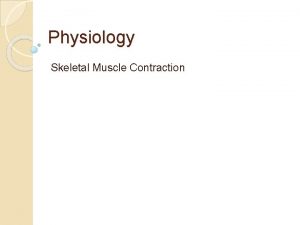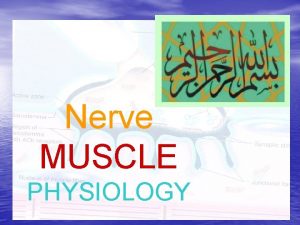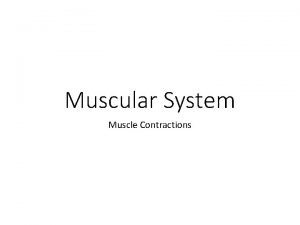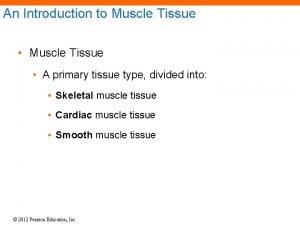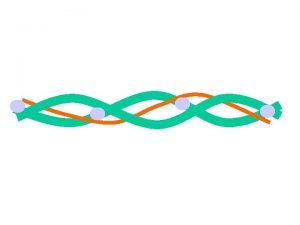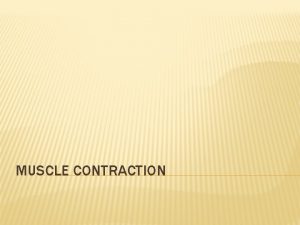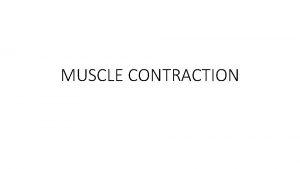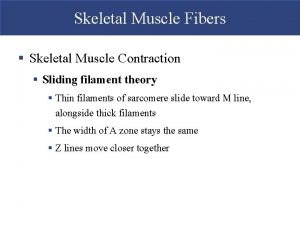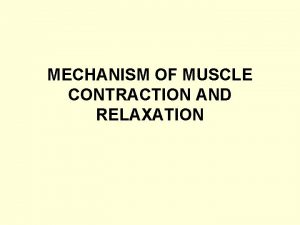Skeletal Muscle Contraction Actin and myosin slide past






- Slides: 6

Skeletal Muscle Contraction • Actin and myosin slide past one another, shortening the muscle fiber and pulling on its attachments • Sliding filament theory states that the head of a myosin cross bridge can attach to actin (at a binding site) and bend, release, combine with another binding site and do it again

Contraction continued • ATPase breaks down ATP to ADP and releases energy – This supplies the energy for contraction as long as ATP is available • Neurotransmitter that signals skeletal muscle to contract is acetylcholine • See Figure 8. 5

Contraction continued • Acetylcholine diffuses across the synaptic cleft and combines with molecules in the muscle fiber to stimulate a muscle impulse – Sarcoplasmic reticulum high in Ca 2+ – The Ca 2+ diffuses into the sarcoplasm – When Ca 2+ is high, linkages form between actin and myosin – Muscle then contracts – Will continue as long as there is ATP and acetylcholine

Contraction continued • Two events lead to muscle relaxation • Acetylcholinesterase decomposes the acetylcholine to stop stimulation of fibers • As a result of decreased stimulus, Ca 2+ gets actively transported back into sarcoplasmic reticulum causing actinmyosin linkages to break

Energy for Contraction • ATP!!!!!!! • When ATP is depleted, cells use creatine phosphate • Creatine phosphate cannot directly supply energy, just phosphate groups • Stored ATP and creatine phosphate run out quickly, causing cells to rely on cellular respiration for energy

• Oxygen needed for respiration • Carried by hemoglobin in blood • Myoglobin is synthesized in muscles and will combine with oxygen—found in muscle fibers • When available O 2 is exhausted, cells use lactic acid fermentation to generate energy • Lactic acid is converted back to glucose, BUT it is a process that requires O 2 • Oxygen debt is the amount of O 2 required to convert accumulated lactic acid to glucose

